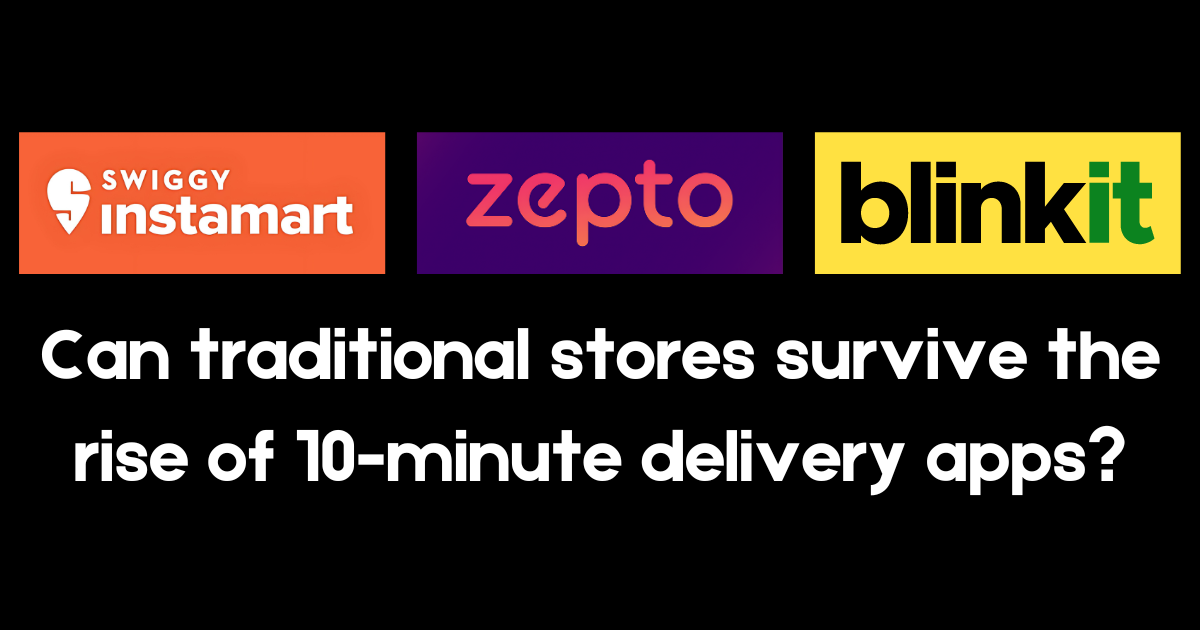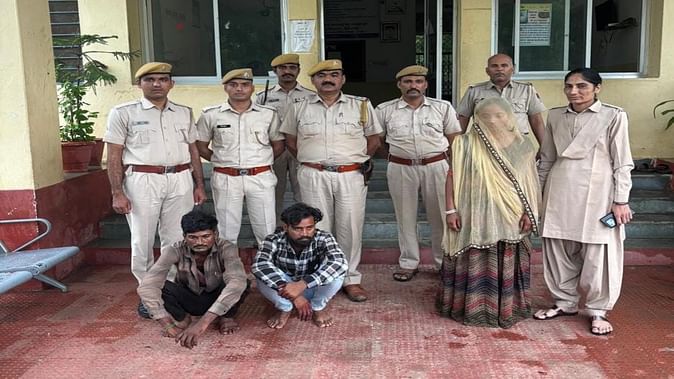10-minute delivery apps are turning India’s urban shopping habits on their head, giving traditional corner grocery stores a run for their money. This lightning-fast shift in consumer behaviour is rewriting the rules of the country’s retail game, fuelled by an insatiable appetite for convenience and instant gratification that’s sweeping through city streets.
The COVID-19 pandemic proved to be the unexpected catalyst for this retail revolution. As lockdowns forced millions to hunker down at home, the need for doorstep delivery of everyday essentials skyrocketed.
Quick to seise the moment, companies like Swiggy’s Instamart, Zepto, and Zomato’s Blinkit sprang into action, rapidly expanding their footprint across India’s major urban centres.
Also Read: Top 10 Nagaland Startups in 2024: Innovation amidst challenges
These quick commerce apps have a secret weapon in their arsenal – a network of “dark stores.” These small warehouses, strategically scattered within a 3-4 km radius of densely populated residential areas, are the beating heart of the 10-minute delivery promise. It’s a model tailor-made for the modern Indian consumer who values time as much as money.
Take Natasha Kavalakkat, a 27-year-old lawyer from Mumbai, who’s become a poster child for this new wave of shoppers. “This is too convenient,” she gushes, marvelling at how these apps allow her to summon everything from apples and bread to last-minute party supplies in the blink of an eye.
But as the saying goes, one person’s convenience is another’s conundrum. For traditional retailers like Prem Patel, a suburban Mumbai grocer, the rise of these apps has been nothing short of a retail nightmare. Patel has watched helplessly as his daily sales have plummeted by half, now hovering around a modest 25,000 rupees ($300). He’s not alone in his struggle.
Also Read: Fastfoodie: Connecting Customers, Restaurants, and Youth in Nagaland
Retailer associations across four Indian states, speaking for a staggering 90,000 grocery shops, paint a grim picture with some stores reporting monthly sales nosedives of 10% to 60%.
The numbers tell a story of rapid transformation. Goldman Sachs reports that these speedy delivery services currently gobble up $5 billion, or 45% of India’s $11 billion online grocery market. But that’s just the appetiser. By 2030, they’re projected to sink their teeth into 70% of the online grocery pie, which is expected to balloon to a mouth-watering $60 billion.
In the face of this digital onslaught, some traditional retailers are refusing to go down without a fight. In Gujarat state, about 500 stores have embraced the digital age, leveraging WhatsApp groups to take orders and deliver goods swiftly within a 6.4-km radius. It’s a classic case of “if you can’t beat ’em, join ’em.”
However, the quick commerce revolution isn’t all smooth sailing. The delivery partners, the unsung heroes of this industry, often find themselves caught between a rock and a hard place. Complaints of poor working conditions and meagre incomes are rife.
Also Read: Global Naga Forum condemns Supreme Court’s Oting incident ruling
In April, Blinkit delivery partners took to the streets in protest after the company overhauled its payment structure, leaving a significant dent in their weekend earnings.
The pressure to deliver at breakneck speed comes at a cost. Delivery agents face stiff penalties for tardiness, with late deliveries potentially shaving off 15 to 20 percent of their wages. This relentless pursuit of speed sometimes pushes workers to resort to dangerous tactics to beat the clock.
As the dust settles on this retail battlefield, questions loom large about the sustainability of the 10-minute delivery model. Critics are quick to point out the potential pitfalls, from the wellbeing of delivery partners to the environmental impact of frequent, small-quantity deliveries.
Also Read: Naara Aaba kiwi wine seeks new distributors in Nagaland
Yet, despite these hurdles, the quick commerce juggernaut shows no signs of slowing down. As more and more Indians fall under the spell of 10-minute deliveries, it’s clear that the country’s shopping habits are undergoing a seismic shift.
The future of India’s retail sector hangs in the balance as traditional kiranas fight tooth and nail for survival against the rising tide of quick commerce apps. While the final chapter of this retail saga is yet to be written, one thing is crystal clear – the way Indians shop for their daily essentials is changing, one lightning-fast delivery at a time.




